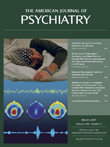In the third edition of DSM, significant improvements were made over previous editions by replacing clinicians’ subjective interpretations of mental disorders with objective descriptions of signs and symptoms that could be rated reliably across investigators. Along with clinicians’ subjective impressions, however, the subjective experiences of people with the mental disorders were removed as well. The subjective experiences of patients could be a valuable component of future editions of DSM, since people’s experiences of a disorder may indicate major underlying processes and may differ from the characteristics of the disorder objectively perceived by outside observers.
For instance, one criterion for a diagnosis of schizophrenia is negative symptoms—“affective flattening, alogia, or avolition” (DSM-IV-TR, p. 312). These symptoms have led to descriptions of the patient with schizophrenia as an “empty shell—[who] cannot think, feel, or act . . . [who] has lost the capacity both to suffer and to hope” (
1, p. 63). Yet when patients with negative symptoms are asked to describe their subjective experiences, prominent themes are loss, loneliness, and the desire for love
(2) . One man with significant negative symptoms (as assessed independently by five clinicians) wrote: “I am a lonely nothing. . . . My afflictions fill the place that was meant for sharing love. I am crying in despair. . . . I have a dreadful fear of not loving” (quoted in reference
3, pp. 202, 205).
Similar evidence comes from Miller’s study of patients’ subjective experience of borderline personality disorder
(4) . Rather than having an “identity disturbance: markedly and persistently unstable self-image or sense of self” (DSM-IV-TR, p. 710), patients in Miller’s study were able to clearly and consistently define their preferences, who they were, and instances when they could and could not be themselves. A core part of this identity, however, was feeling estranged from others and inadequate when judged by perceived social standards. One patient was quoted as saying, “I never met anyone that I was equal to or better than, no matter what . . . Even if it is a bum on the street, there is something that makes him better than me. It is not that I have done anything bad; it is like what I was born into.” (
4, p. 1217). Thus, Miller eloquently summarized, “rather than having an impaired sense of self, they seemed to have a sense of themselves as impaired” (p. 1216).
Patient-subjective data could easily be incorporated into DSM-V. Developing diagnostic criteria based on people’s subjective perceptions of mental disorders would require fewer changes than many of the current suggestions for DSM-V (see references
5 –
7, for example), could be as reliably and validly diagnosed as current criteria (e.g., a “sense of self as impaired” could be as reliably and accurately diagnosed as “impaired sense of self”), and would not require that clinicians learn a new structure or conceptualization of mental illness. In addition, including studies that examine patients’ subjective experiences in the pool of data consulted when deciding how disorders should be defined could be particularly helpful in addressing inconsistencies across studies or gaps in data sets, since qualitative research allows for more in-depth inquiry into focused issues. Moreover, including people with mental disorders in DSM-V workgroups could provide invaluable insights from those who have daily first-hand experience of a disorder. Despite assumptions about patients’ lack of insight into their illness, when asked, they often are able to describe both their experiences of illness and what might be helpful for them
(8) .
Finally, incorporating patients’ subjective experiences into DSM could help clinicians understand more accurately their patients’ experiences and could substantially increase empathic bridges, an important predictor of positive treatment relationships and outcomes
(9) .
Increasing the validity and clinical utility of DSM is of the utmost importance
(10) . Patients’ descriptions of their experiences of mental disorders are a fertile but virtually untapped resource that may be a valuable means for achieving these goals.

